A few months ago – the very same week the Lomography New Jupiter 3+ was announced – I had an email from a chap at Lomography in New York. He’d spotted I was having a lens from a compact camera modded, and wondered if I wanted to try out their Minitar; a Lomo LC-A lens modded by Lomography to M-mount. Obviously I said yes, I’d really like to, but if they were up for loaning me gear, the lens I’d really like to borrow first is the New Jupiter 3+.
Since it was only just released at the time, the demo copies were out in the hands of much bigger fish than me. As such, I had to wait a little while. A few weeks ago, after bothering the nice marketing lady on the Lomography stand at the photography show, a package landed on my desk containing a rather trendy looking box with a very shiny lens inside. This post compromises the thoughts and experiences I had in the few weeks I had to play with it…
A bit of history – The (old) Jupiter 3
In 1932 if you didn’t want to buy a Leica, a solid alternative would have been one of Zeiss Ikon’s new Contax cameras. In fact not only were these cameras a solid alternative, they were actually more widely considered the choice of the pro. The lens that came with the Contax was the 50mm Sonnar. There were two varieties of this lens, the f/2, and the f/1.5. Both were fast lenses for their day, but thanks to their optical designs they had very good reputations.
The technical bit
The Sonnar lens formula was designed by Ludwig Bertele in the early 20th century. Unlike the symmetrical designs Leica were using, Bertele’s focus (pun) was in asymmetrical designs. As I understand it Leica had chosen the symmetrical lens design route as this provided them lenses that were were better corrected for distortions and aberrations. The problem with Leica’s early designs is that they were more susceptible to flare and lower contrast. Bertele was less concerned with aberrations and distortions, instead focusing on creating higher contrast lenses that suffered less with flare.
War and the Soviets
As we all know, in the late 30’s war broke out. With Germany being considered somewhat the antagonist in the proceedings, when the dust settled the Soviets ended up in occupation of some of Zeiss’s lens manufacturing works. Through the same post war punishments that saw some very Leica-like cameras popping up made by various manufacturers around the world, the Soviets made some very Zeiss like cameras and lenses.
These Soviet copy lenses were given new names. In the case of the two aforementioned Sonnar’s, they were both given the name Jupiter. The Jupiter-8 lens was a copy of the 6 element 50mm f/2 Sonnar. With the Jupiter-3 being a copy of the 7 element 50mm f/1.5.
Short of getting bogged down in the somewhat overwhelming world of Cyrillic lettering and vastly iterative versioning, I’m going to point you in the direction of Sovietcams for any further hit of Jupiter-3 history you might require. Though for the benefit of this post, it is definitely worth pointing out that as well as the commonly produced Contax mount Jupiters, there was also a commonly produced 39mm mount version that bore a remarkable similarity to Leica thread mount.
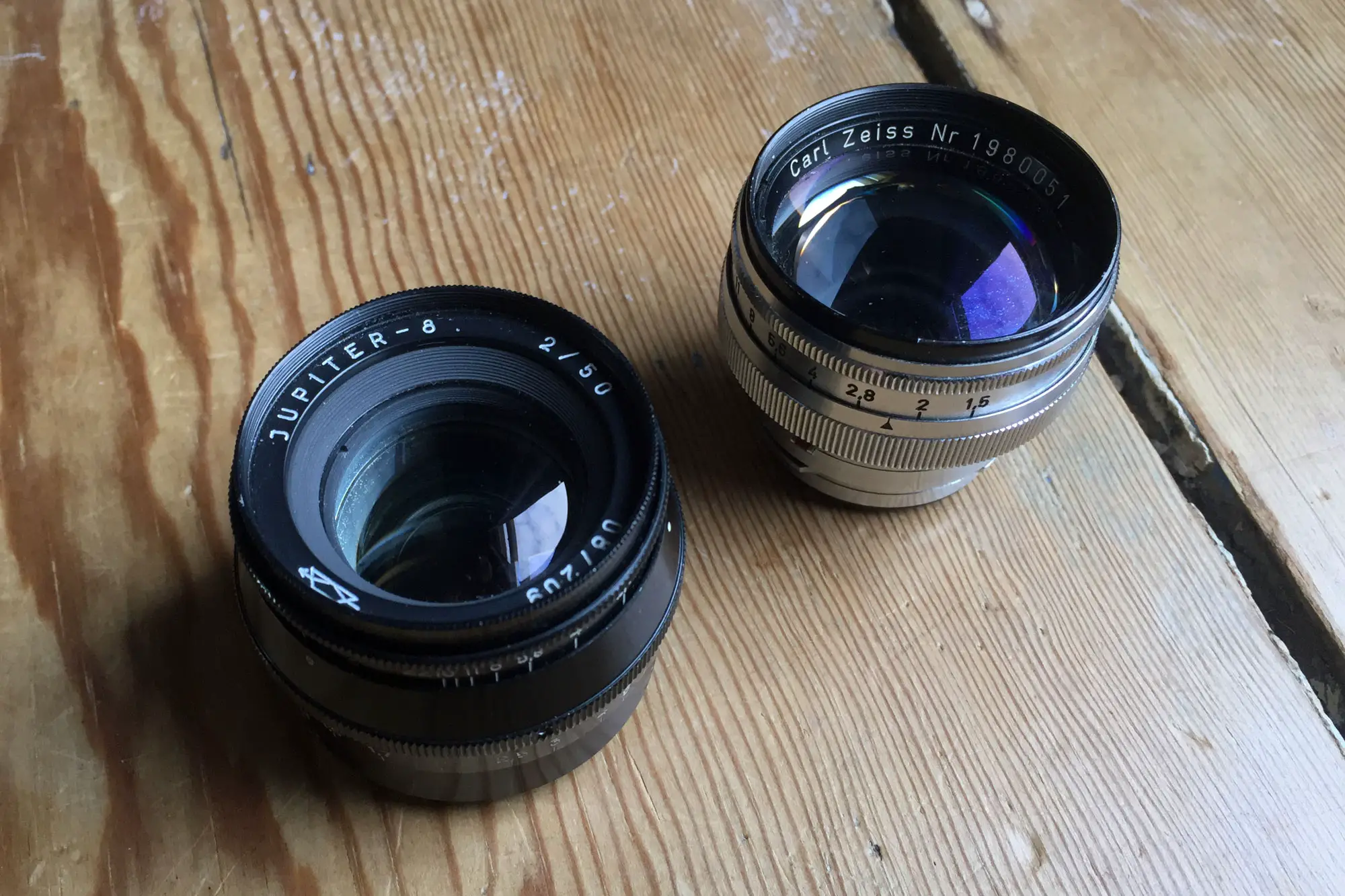
The Soviet thread mount
If you want to get yourself confused, have a search of Google for the differences between Leica Thread Mount (ltm/lsm), L39 and M39. I can’t find a single pair of sources that agree completely with each other on the definition even today. The problem is, there are two key variables that separate lenses with a 39mm lens mount. These are thread pitch and lens register. Get either of these wrong and the outcome is a lens that won’t mount, or a lens that will mount but won’t focus properly, respectively.
In the very early days of Leica, they chose a 39mm thread with a quite specific pitch. This became standard. What was not initially standardised was the lens register. Early Leica lenses were matched to camera bodies individually. By the time the rest of the world got their hands on Leica’s designs, Leica themselves had standardised both pitch and register. Unfortunately this standardisation was not quite obtained by either Soviets or Japanese straight away. Canon initially got the pitch wrong, meaning their lenses wouldn’t mount on Leica cameras. They soon corrected this. The Soviets on the other hand… well, I can’t work out if they got the register wrong intentionally or if they were just a bit sloppy? Either way, many of their lenses didn’t, and still don’t accurately focus on Leica bodies.
The old Jupiter 3 – focus, and other issues
This focusing problem is most apparent in faster or longer lenses when shot wide open. Lenses such as the old Jupiter 3 readily well regarded lenses in terms of their optics, but are unfortunately just widely fraught with focus issues when used on Leica cameras. Until recently the solution to this was having an old lens modified. Unfortunately to warrant having this done, you would still need to find a good copy first. All old lenses are prone to haze, fungus, dust accumulation etc. But all of these things can no doubt be solved in the process of modification. What can less readily be solved are problems with scratches to the front and rear elements, delaminated elements or damage to the coating. Not to mention the simple fact that lenses made with varying quality controls would have performed differently straight out of the factory. Even these days with modern manufacturing people talk about getting a “good copy”, so with FSU quality controls, who knows what you might get when buying one of these old lenses used on eBay.
This is for me the crux of what Lomography profess to have achieved in the new Jupiter 3+. Through bringing the Jupiter 3 back into production they remove all of the potential woes of buying a used FSU lens.
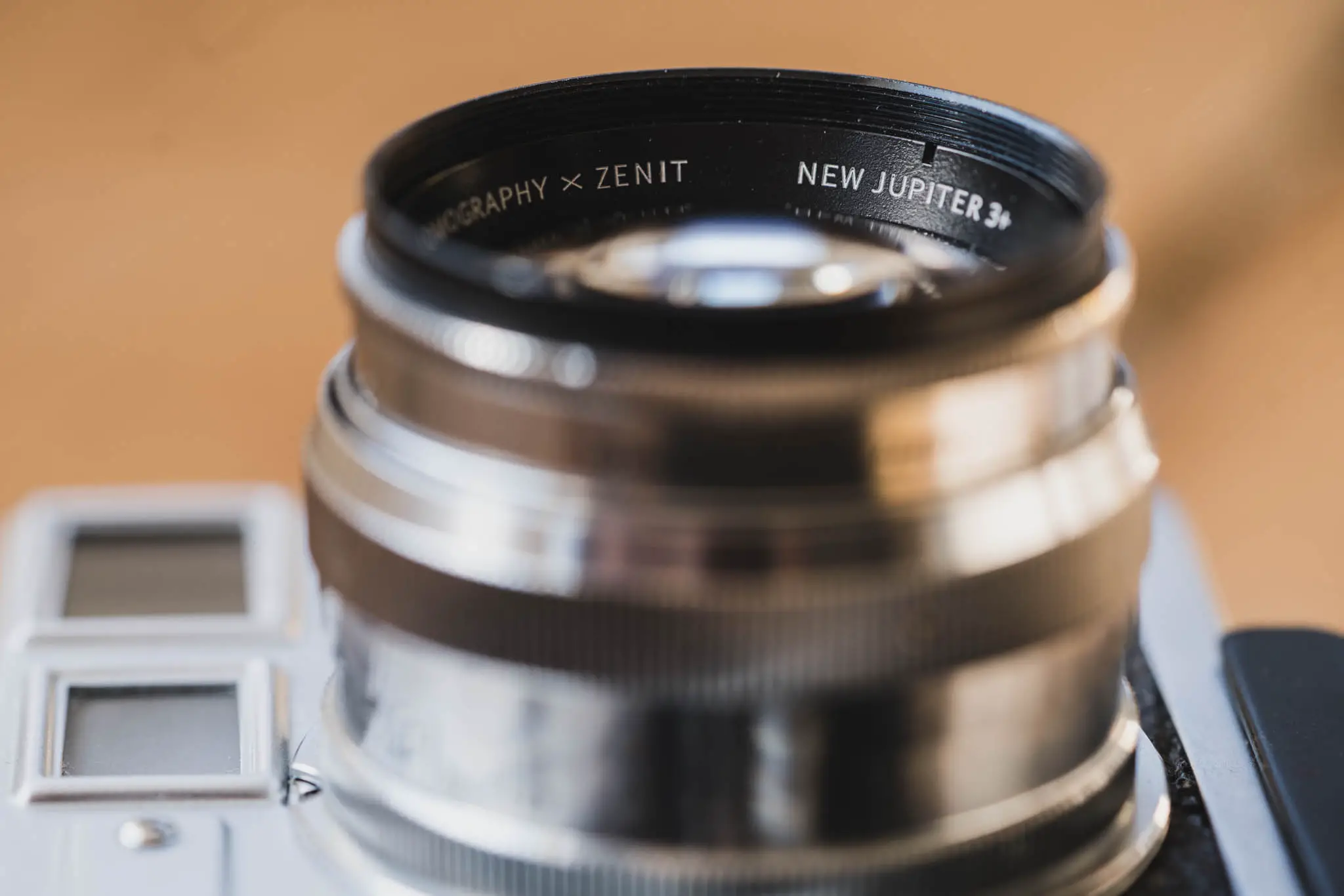
The New Jupiter 3, an old Sonnar design in 2016
There is of course another current model Sonnar lens that mounts on Leica rangefinder cameras, that being the Zeiss 50mm f/1.5 ZM Sonnar.
What’s really interesting about the Zeiss Sonnar is that whilst it could be argued to be a more direct family descendant of the original Bertele design, optically the new Jupiter 3+ is more similar. An evolution of the original, the modern Zeiss lens is actually a 6 element design, whereas the new Jupiter 3+ retains the 7 element design of the early 50mm f/1.5 Sonnar.
Does this make any difference in practice? To be honest there is probably little difference that a person of my technical knowhow could pin to it specifically. But, there are a few other technical differences between these lenses that do make me particularly intrigued by the new Jupiter 3+ lens. Especially since the Zeiss ZM Sonnar is – as any regular reader will know – my favourite lens by a country mile!

The new Jupiter 3+ – The theory
As mentioned, the new Jupiter 3+ is an almost exact copy of the old Jupiter 3 lens. Its origins can be traced back to the Zeiss lens the Soviets originally copied. Thankfully – at least on paper – it solves some of the problems the copies suffered, retains some character forming features, and brings a couple of new tricks and design decisions to the table.
Correct register
The first, and by far the biggest advantage that Lomography state about the new Jupiter 3+ is that will focus accurately on Leica rangefinder cameras. This is the biggest reason I’ve never previously bought or even thought to try a Jupiter 3.
Closer focusing
Additionally to this, Zenit – the Russian lens manufacturers that make the new Jupiter 3+ – have also slightly adjusted the lens to allow for closer focusing down to 0.7m. This is a 30cm advantage over the close focus abilities of the original which only focuses down to 1m. It’s also at 20cm advantage over the modern Zeiss ZM Sonnar that only focuses down to 90cm.
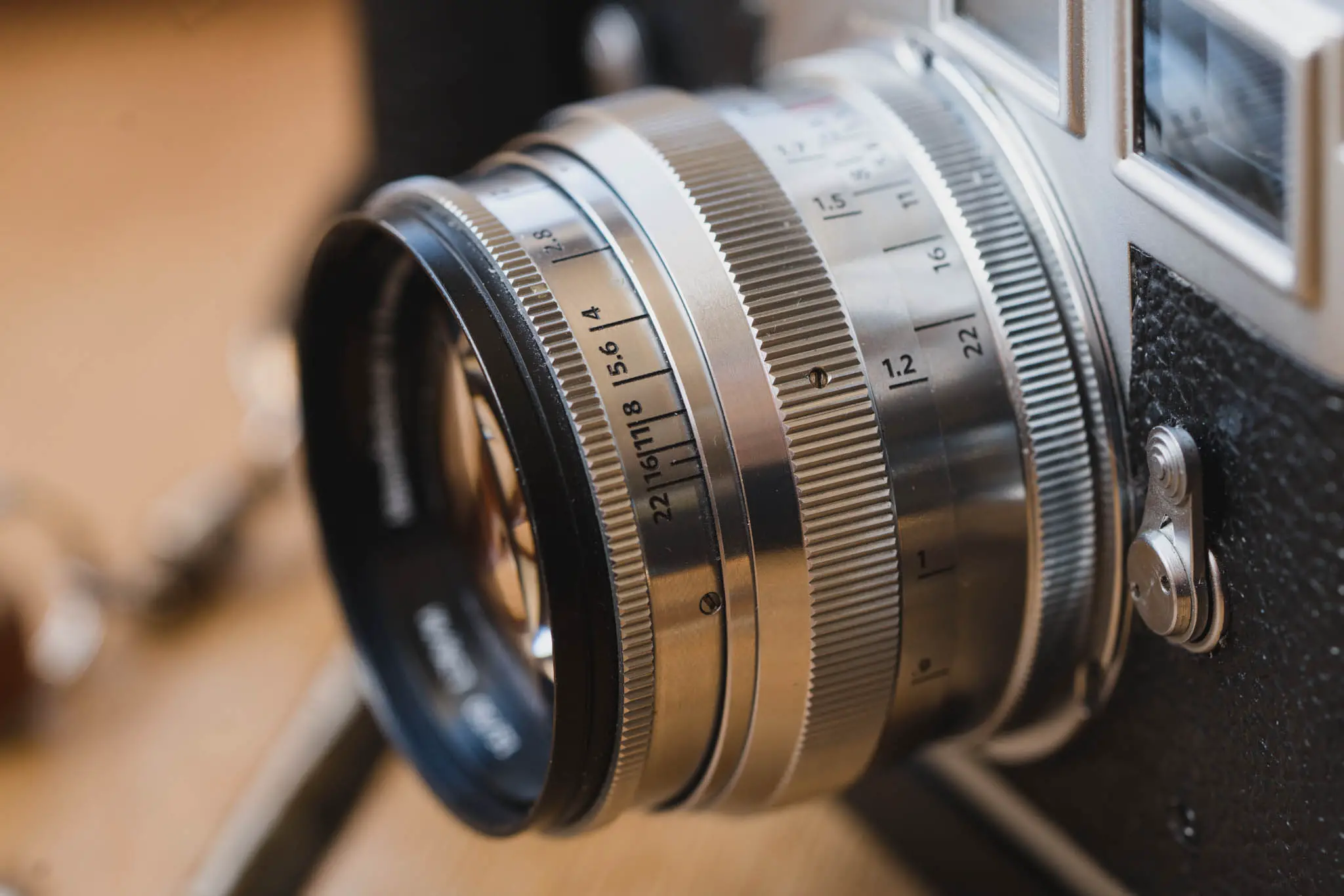
Modern coatings
The new Jupiter 3+ is also said to come with new lens coatings. What’s interesting about the story of coatings and this modern Sonnar design is that both the design and lens coatings are about solving the same problems. Flare and contrast. Even my single coated, delaminated and generally tatty old Contax mount Sonnar from the 1950’s has huge potential for good contrast.
Adding modern coatings to these designs is what I believe really makes the Zeiss ZM Sonnar the perfect lens for me. I waffle on at great length in my ZM Sonnar review about the 3D rendering and the way it deals with light and flare. In theory the new Jupiter 3+ should share some of these positive character traits.
Round aperture
Both my 1950’s Sonnar and my current Zeiss ZM Sonnar have a star shaped aperture from about f/2 to f/8. Wide open, and stopped right down it’s circular but in these middle apertures it isn’t. This is not the case in the new Jupiter 3+ which is circular the whole way through its range.
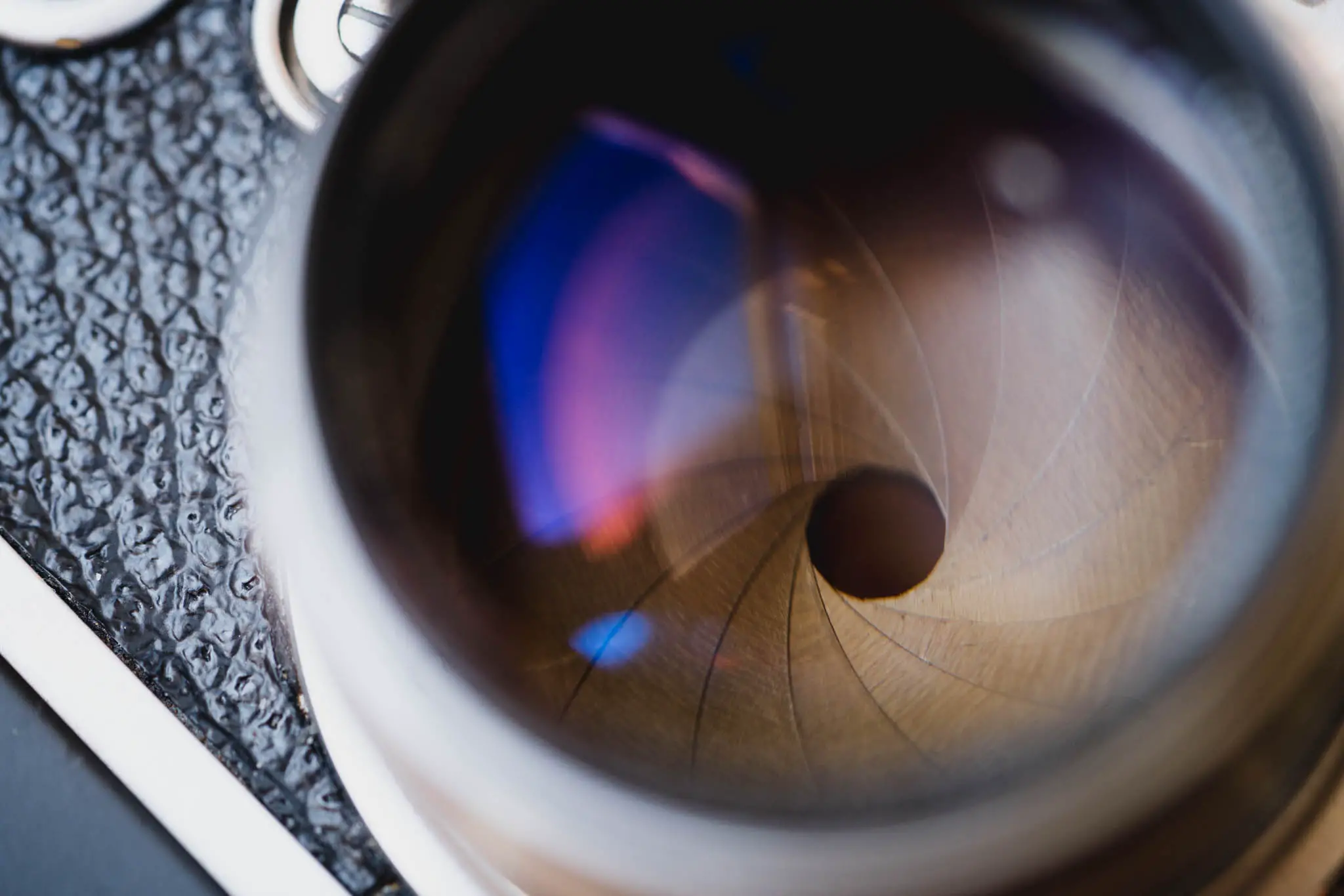
The most widely claimed advantage of this will be the creation of smooth bokeh in the New Jupiter 3+ lens. As far as I can gather though, the theory behind inclusion of a star shaped aperture is about reducing the effect of focus shift. Focus shift is a big issue with the Sonnar lens design, and a subject I go into in great depth in my ZM Sonnar review. This means that whilst the New Jupiter 3+ might have a smoother out-of-focus, it might just be harder to obtain an in focus photo at these middle apertures when used on a rangefinder camera.
The New Jupiter-3+ in practice – my review
To my mind the logical place to start a review is almost always how a camera or lens feels to use. With this new Jupiter 3+ it feels more important than ever. Quality control and build quality should definitely be in the list of an advantages in buying a new Jupiter 3+ over and above an old FSU Jupiter 3!
The New Jupiter 3+ in the hand
I must admit, finding some minor imperfections in the build quality of the new lens didn’t come as too much of a surprise to me. It’s not exactly a secret that some of the Lomography products aren’t quite on a par with Leica or Zeiss in terms of build. But, let me provide a bit of perspective before you assume this is going to turn into an out and out hammering of this lenses build – it’s actually pretty good! Perfect, no, but all things considered, definitely good enough – and importantly, much better than I expected! Let me get the negatives out of the way straight away.
A bit of play in the aperture
In the copy I have here, an otherwise very smooth and satisfying clickless aperture is slightly let down by a small amount of play in the aperture ring. Is it really an issue? The only way to answer that question would be through use. At the moment doesn’t feel perfect but it also doesn’t feel like anything is broken. If I’d bought the lens and I was expecting perfect, it might be a touch disheartening, but the beauty of buying new is such that if I felt it was outside of tolerable, I’d have the advantage of it being new, and me being able to take it back for a replacement. As it was, if it was mine, I don’t think I would have worried.
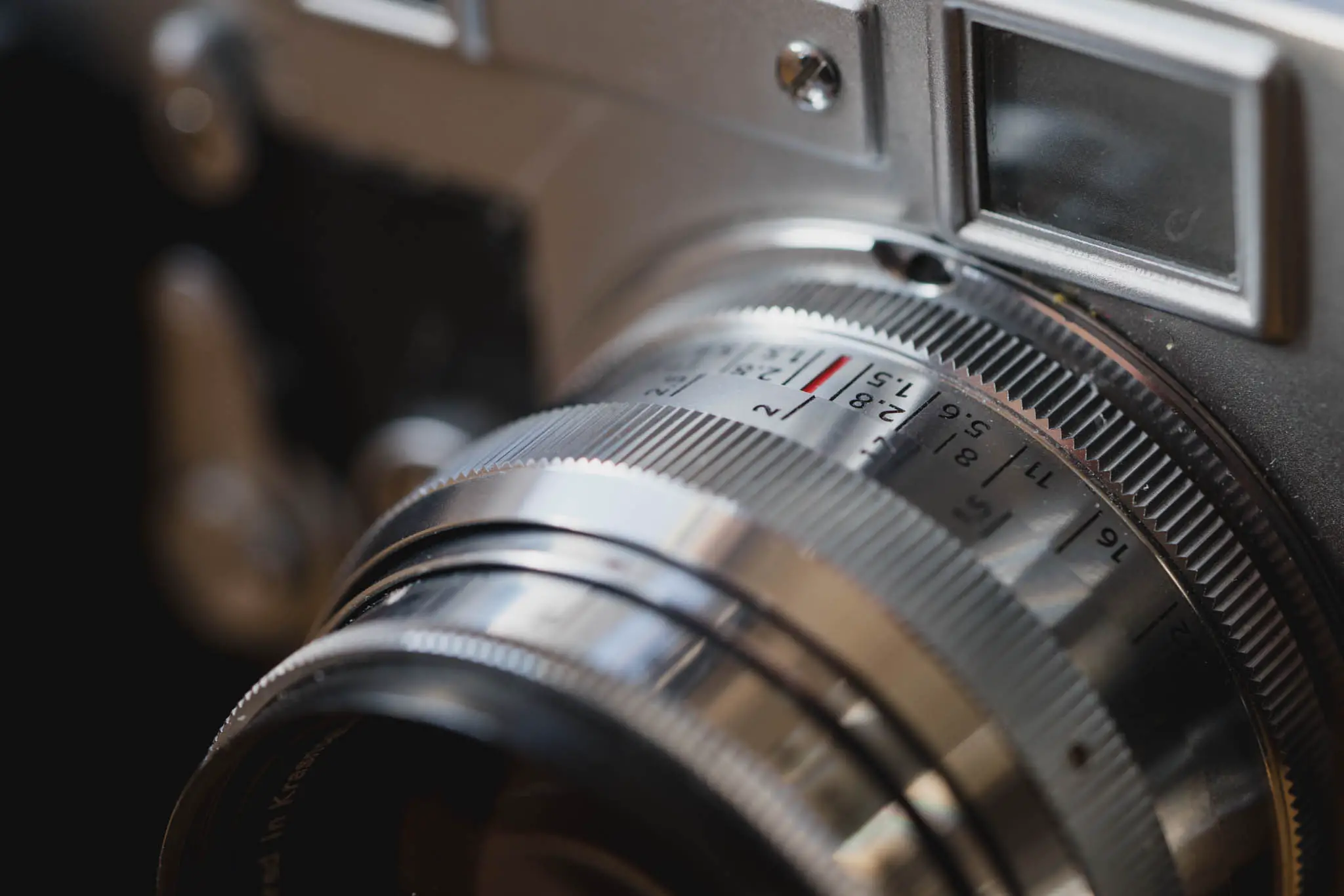
M mount adapter
Something I wouldn’t have been happy with was the M-mount adapter that came in the box. Bluntly, the one I received was pretty useless. It feels cheap and bizarrely somehow managed to bring up the incorrect frame lines when I mounted the lens on my M-A. Flicking the frame line lever into place seemed to solve the problem, but it felt a little jammed. It very quickly got returned to its box and replaced by one of my Voigtlander ones. Lomography have manufacturing relationships in China, so it’s quite easy to assume that this adapter is of similar origin to the crappy ones you can buy off eBay for a few quid. If you want my advice, buy a Voigtlander one, or even an old Leica one.
Otherwise, well built
Thankfully, these are the only complaints I can really find. If you’ve handled some of Lomography’s more “toy” like products you will know what I mean when I say they are not always the most solid feeling things. This is simply not the case with the Jupiter 3+. It’s heavy and it feels like a solid lens made out of good quality materials (brass I think)… The tolerances might not be quite as tight as you might expect from a German or Japanese built lens, but that’s all that sets them apart on face value.
Unfortunately for the sake of this review, I’ve never handled an old Jupiter 3, so I’m just not sure how these tolerances compare to lenses of old. I have used many a Jupiter 8 though, and all of them have had very loose aperture controls and inconsistent feeling focusing. As you’d hope with a new lens, this is not the case at all with the new Jupiter 3+. Focus and aperture controls are both very smooth and consistent in their rotation. How long this would remain the case is hard to say, but out of the box, short of the slight tolerance issue in the aperture ring, it’s very nice to use!
Long focus throw
One quick other point on the focusing while I’m here. Like many lenses built in the period of the lens this is based on, it has a very long focus throw. There’s little chance of a quick focus from infinity to close focus as the focus needs a about 270 degrees of rotation. This is an odd user experience for someone coming from a modern Zeiss Sonnar, but once you get used to it, there is a sense of precision you get from such a long throw. It also comes with the advantage of allowing you to use the focusing scale even at f/1.5.
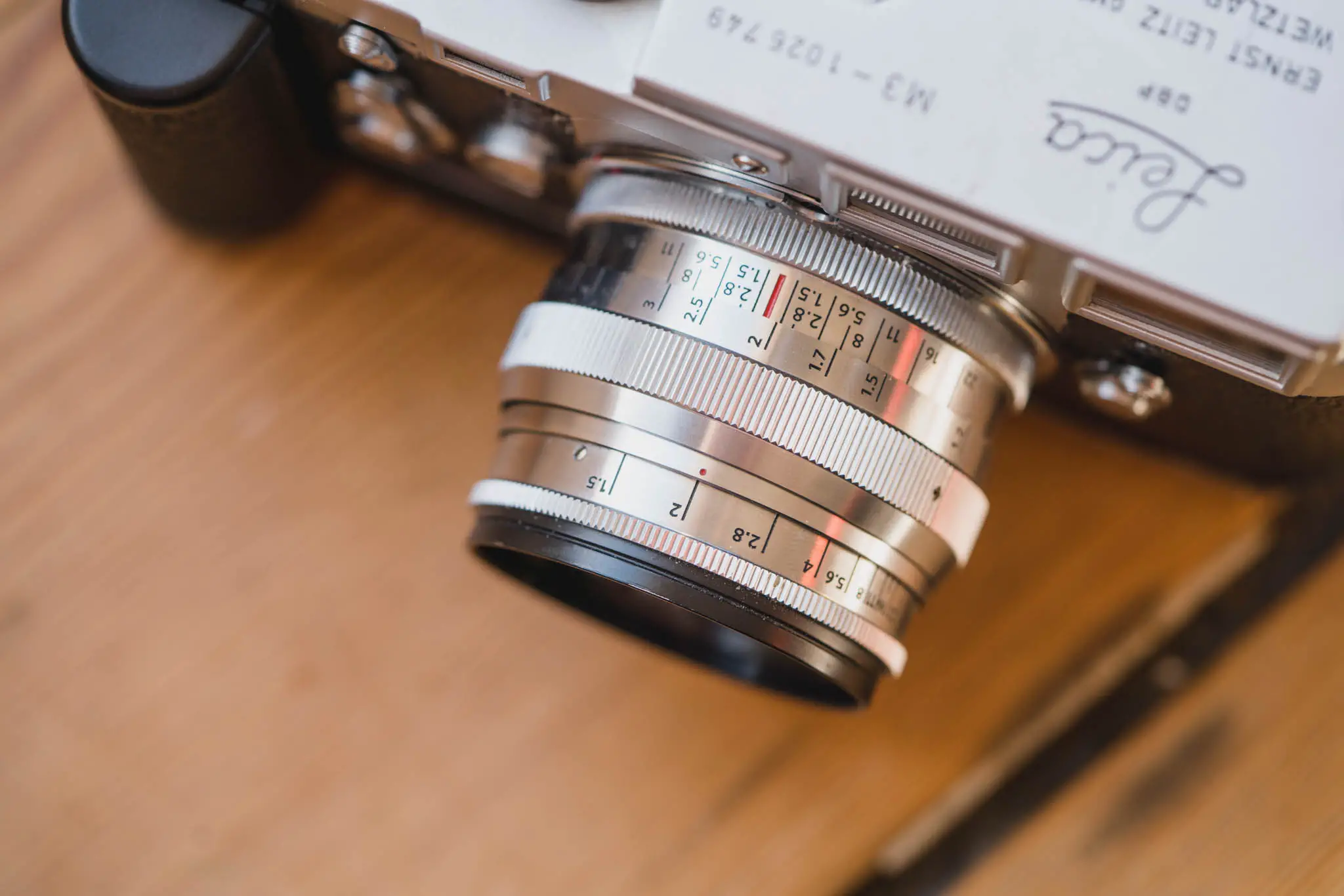
Optical qualities
If you arrive at this review either from the angle of knowing a bit about lenses, or just knowing a bit about what Lomography do, you probably know roughly what I’m going to say about this lens. That being said, there must be at least some people who will come to this part of this review not knowing what to expect? For example, I did have one person on Facebook ask me “It’s quite cheap for a fast 50mm in Leica mount, is it any good?”. My response was quite simply “That really is going to depend on your definition of good!”
If you really do have no idea what to expect from this lens, let me just to set your expectations. If you are the sort of person that is looking for a lens that’s modern in its rendering and as close as possible to objectively perfect, then you’re barking up the wrong tree here. Alternatively, if you are open to the idea that a lens can still be perfect, despite not really measuring well by the merits that many modern photographers rate a lens, then this might be of more interest to you.
Either way – though especially if you sit in the former camp – just remember this lens is not supposed to be compared to the Zeiss Otus’ of the world. As such when reading this, I think it’s important to remember that what are about to read is a description of the character of the lens; this is not a description of positive or negative traits. The concept positive and negative are only what any one individual assigns to the character traits in lenses. Being open to that idea is going to really help you understand what this lens is about.
Bokeh
I wouldn’t normally start with Bokeh, but given the provenance and the current producer/manufacturer, it feels like it’s a subject that many of the potential users of this lens will hold dear.
Let me start by saying this lens is definitely on the side of characterful in its rendering of out of focus. Like the ZM Sonnar, wide open is where it has the potential to be most “distracting”. Though it’s slightly more extreme than the 50mm ZM Sonnar, the character is quite similar. Shot wide with dappled light through foliage in the background and you can definitely expect to find an edgy almost bubbly look to out of focus highlights.

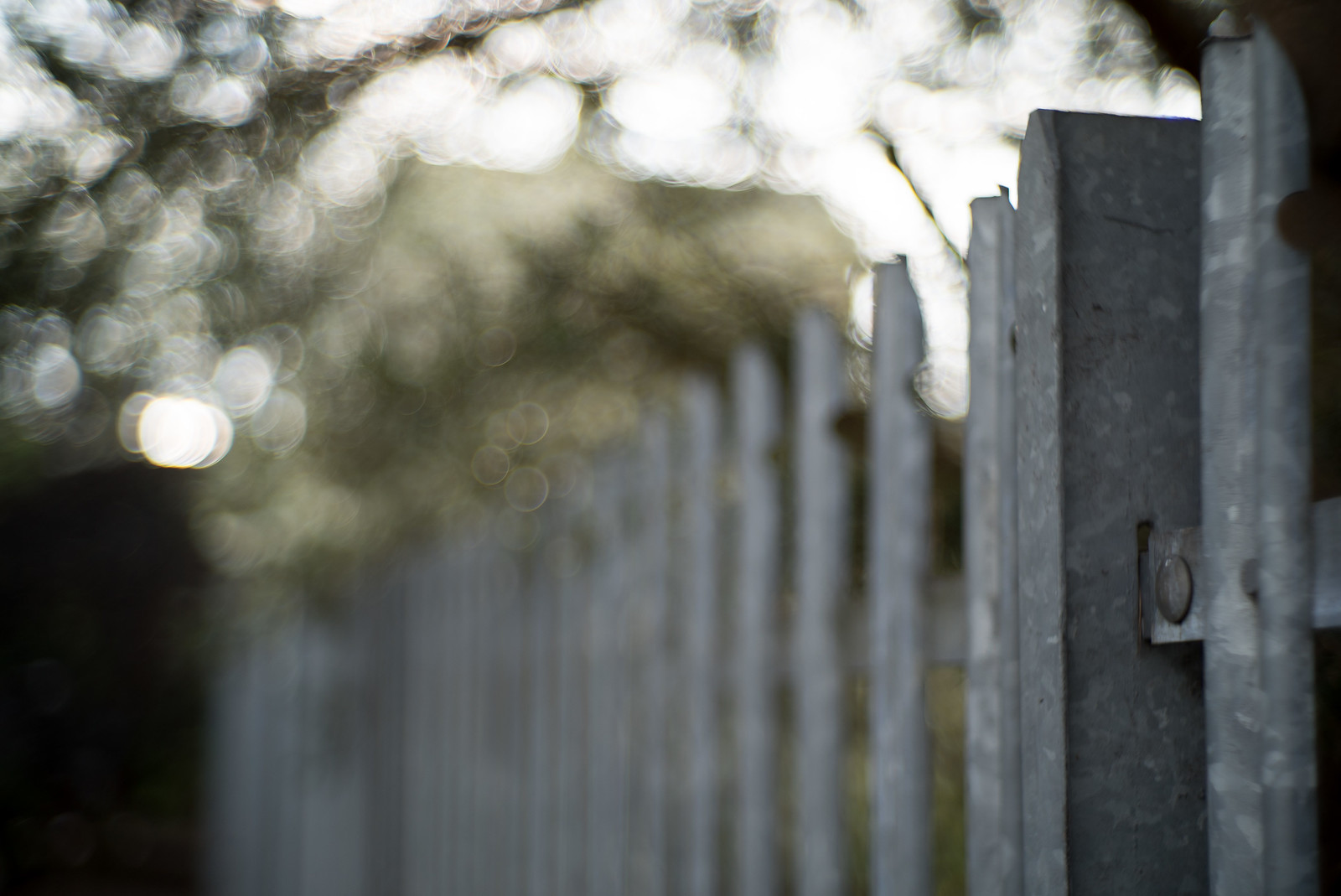
Stop down to f/2 or give it backgrounds that are less prone to causing distracting bokeh and things start getting a lot smoother, and thanks to the round aperture the very blurry star shapes that rarely appear with the ZM Sonnar are as expected, not present.

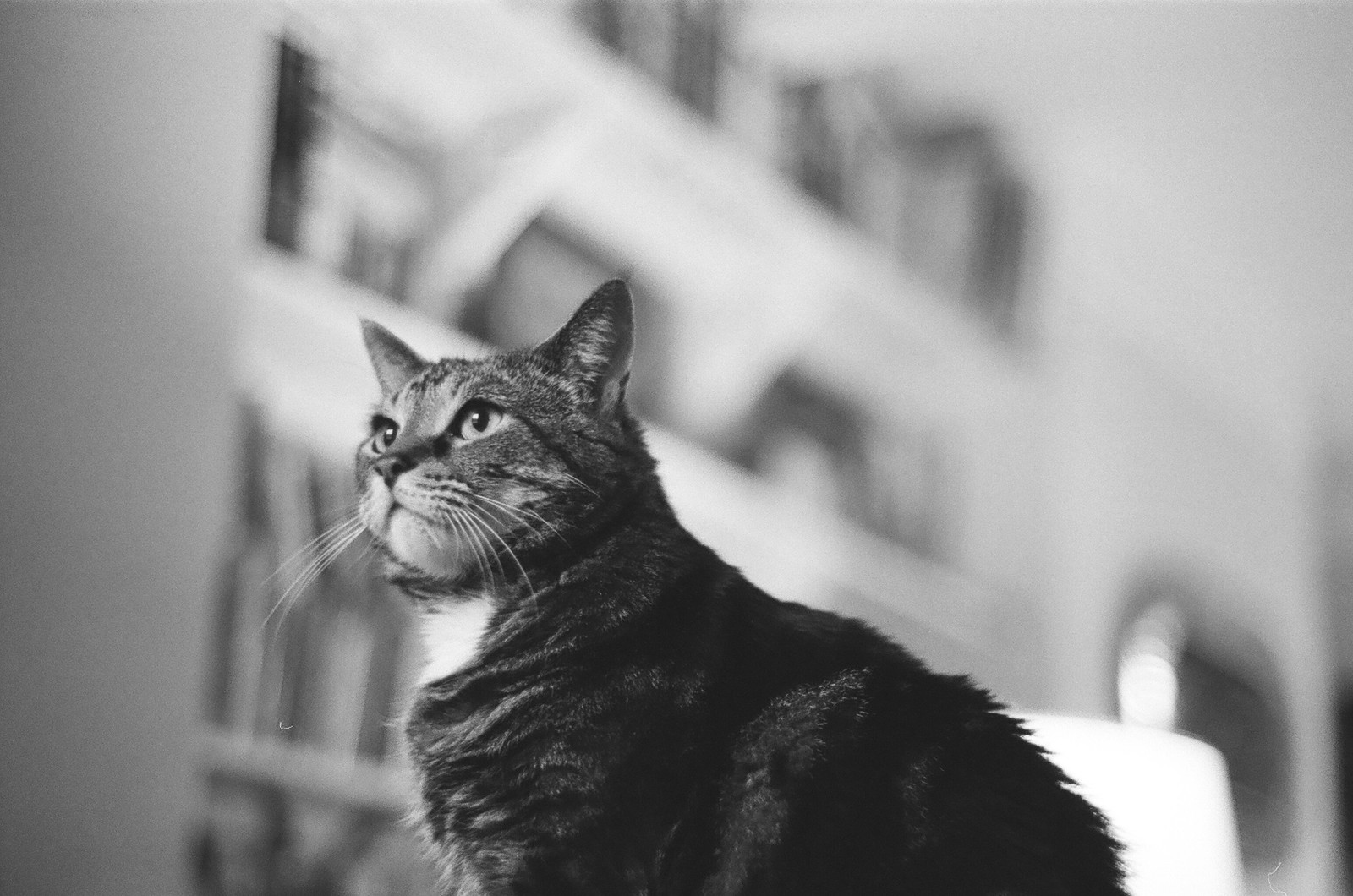
Depth of field
The new Jupiter 3+ also has the same sense of very shallow depth of field as the ZM Sonnar. To get good subject separation from the background there really isn’t the need to shoot wide open. As such, if you want your bokeh smoother, you don’t need to shoot wide open and you can still expect nice subject separation.
Of course, if you want that strong character as part of you out-of-focus, it’s there on tap with the Jupiter 3+; just set the lens to f/1.5 and embrace that bokeh character.
Sharpness, Contrast & 3D pop
Sharpness for me is the subject that deals with a lack of softness. This might seem like an odd distinction to make, but this is the best way to differentiate it from contrast, a subject that deals more with clarity and “pop”. This differentiation is important when looking at a lens like this as really objective corner to corner sharpness is probably not something I’d rank it that strongly for at any aperture, whereas its contrast is what makes it!

At the widest apertures – even with the advantage of the live view and focus peaking on one of my Sony cameras to obtain a sharp photo – toward the edges of the frame the sharpness drops off. You can see in the above photo Connie’s left eye is much softer than the right which is more central to the frame. What this points to is that whilst some of this softness might be down to field curvature, it is also just softer toward the edges too.
By about f/2.8 it is at least mostly possible to frame a photo with your subject off centre, but edge softness is still abundant. This edge/corner softness does creep closer to the edges of the frame the more you stop down. Even at f/8 – depending on subject – it can seem to get softer toward the edges and corners of the frame.

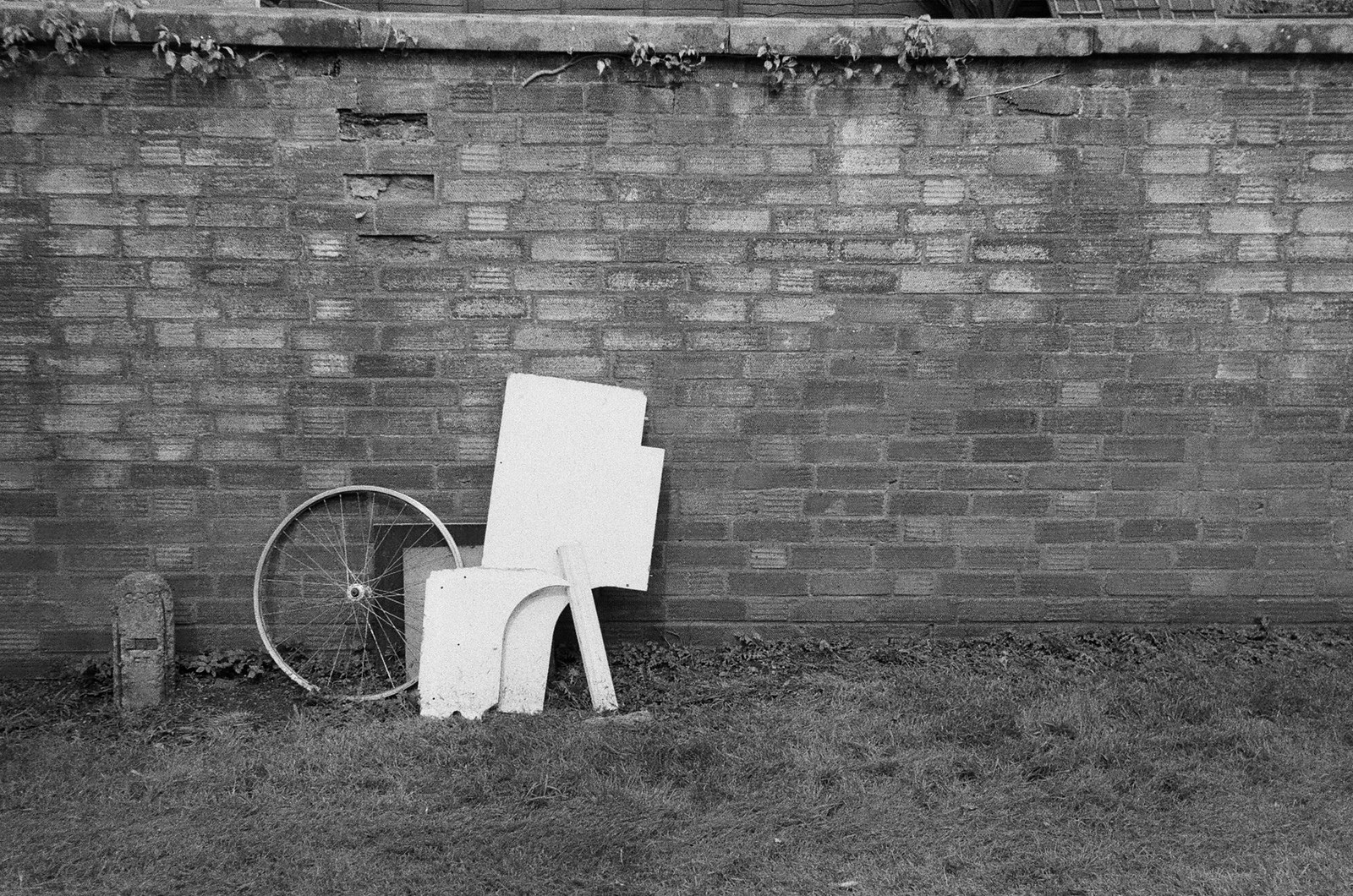
I found corner softness to be much more noticeable in photos taken with my Sony A7s where it gets positively smeary into the corners – of course the cameras sensor is compounding the issue here, but it remains a consideration nonetheless.

Additionally to this falloff toward the corners, it is less sharp when shot wider open. At wider apertures even in focus subject isn’t especially objectively sharp. Fortunately, the high lens contrast Sonnar “pop” is definitely present in this lens – this acts to increase levels subjective sharpness.
The sense of “3D pop” most apparent when the lens is stopped down a bit. That said, it is still possible to obtain a fairly contrasty shot wide open, but to do so you really need the light on your side… or more accurately you really need the source of the light to be behind you.
With the light in your favour, or when stopped down past about f/2.8, the lenses contrast can give your subject a more real and 3D look that I so love in the Zeiss ZM Sonnar. Stopped down further and provided you shoot subjects that aren’t going to fall foul of potential corner softness and the contrast really comes into play. This results in images that have a strong sense of clarity and definition.

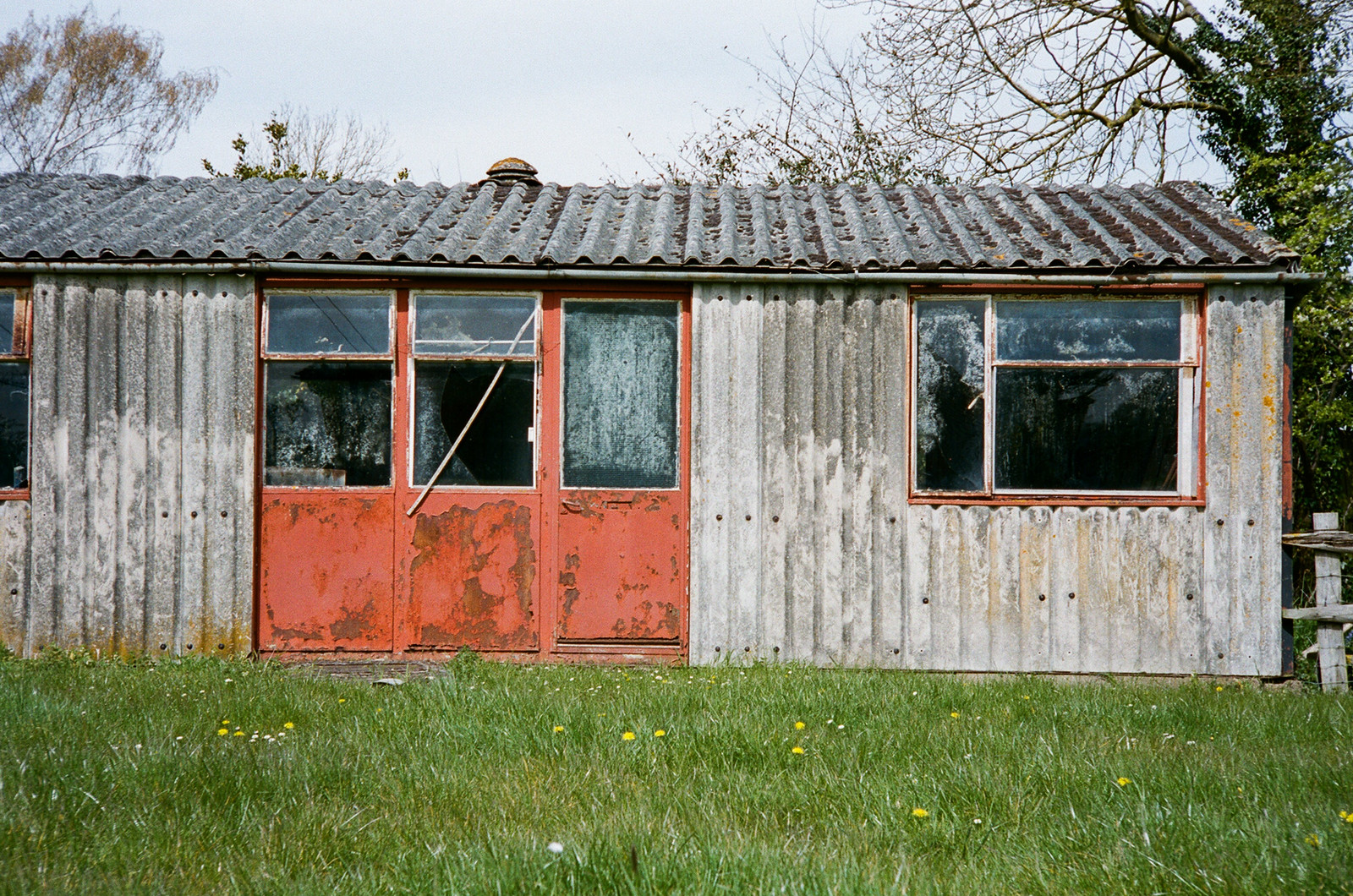
Colour
To my eye, the colours this lens produces are quite as bright as those obtained with a Zeiss ZM Sonnar. If your preference is for slightly more muted colours, this lens will more likely suit you.
Flare
The New Jupiter 3+ is quite susceptible to wider veiling flare. Comparing it to the ZM Sonnar which is much more capable of localising veiling flare to the area surrounding a light source, the Jupiter 3+ behaves much more in keeping with how you might expect a more elderly lens to react to the light.

This photo of Connie is quite indicative of the of the affect of veiling flare on a digital camera when shot wider open toward a source of light. Again, stopping the lens down does reduce the impact of the veiling flare.
Ghosting
Like the ZM Sonnar ghosting is quite difficult to fall foul of in any too serious a way. The most extreme ghost l've had this lens produce was in low sun in my garden one evening. I had it on the A7s and was trying to introduce flare by varying the angle of the lens compared to the sun. I managed to achieve this rather large single ghost mid frame, I had to really try to get the lens at just the right angle to obtain this.
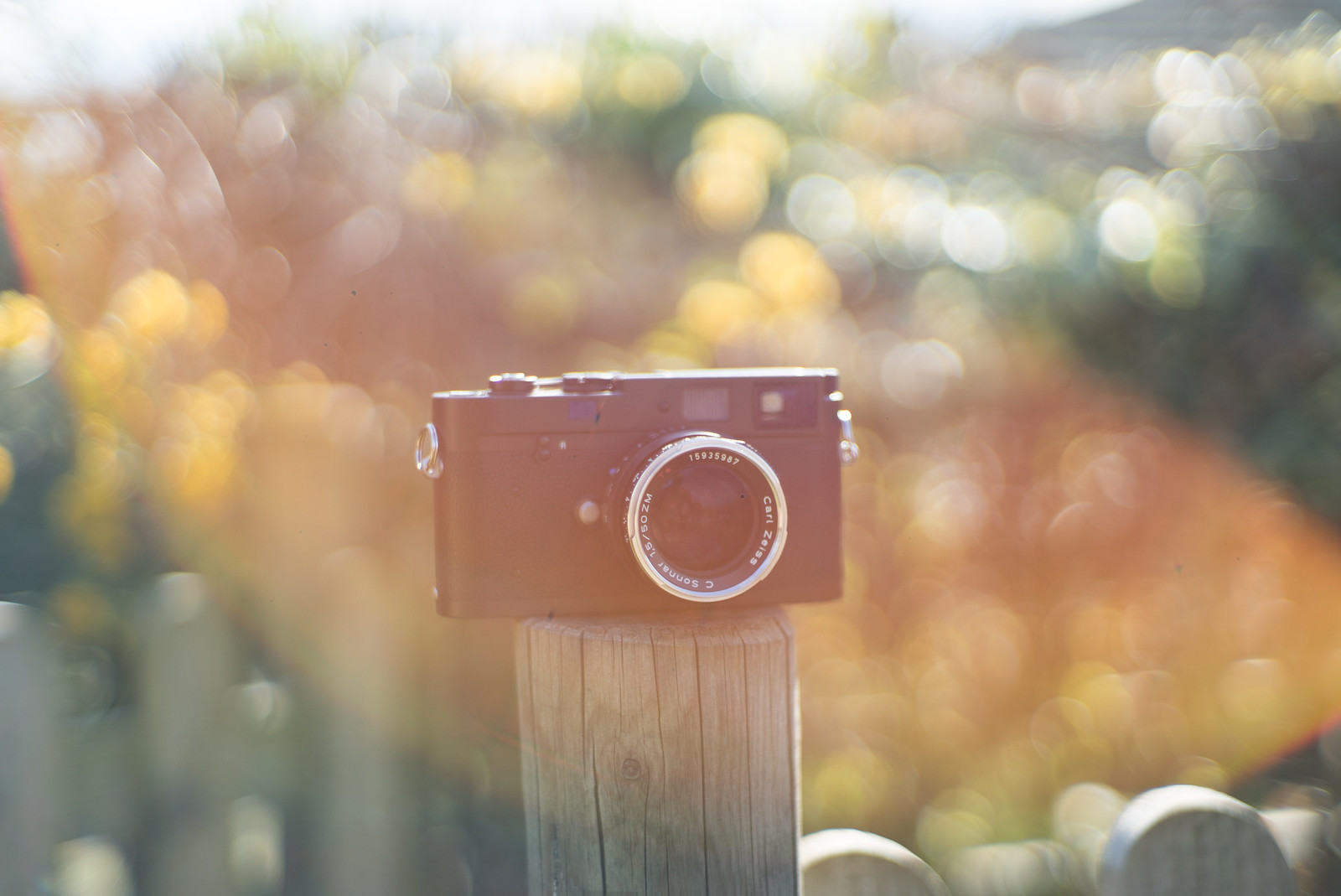
Other than this experience I've noticed the odd slight rainbow shaped artefact and occasionally a little smudge of light here and there.
Overall I think the effect of flare on results is more a gentle impact than a destructive one, though it's fair to say, I have felt caught out by it on occasion. Whilst not right for all types of photography, this is definitely one of those traits that some will find very appealing. I know that some people will spend their energy introducing this sort of look in post process - with this lens, it's part and parcel of the character.
Distortions and Vignetting
Taking test photos in my living room I found there to be a quite noticeable pincushion distortion. That said, when taking photos of buildings outside, I found it less obvious. I'm going to share the latter as I'd guess more people are going to take photos of buildings than perfectly square on bookcases. Vignetting is also visible in this photo.
Focus shift
If you've read my Zeiss ZM Sonnar review you'll know that focus shift is a known issue with Sonnar lenses. Dealing with focus shift is part and parcel of owning and using a Sonnar lens effectively. Zeiss deal with the problem to such a degree for you that in my opinion the ZM becomes a very useable lens with little chance of focus shift having too major an impact on your photography.
Focus shift in the Sonnar is dealt with in two ways. The first is the point at which the lens is optimised. As I mention in my ZM review, Zeiss told me that their lens is optimised for perfect focus as f/2 and 1m. The result of this is some slight front focusing at f/1.5, and back focusing the other side of f/2. Additionally to this, as mentioned earlier on in the post the Zeiss also use a star shaped aperture, which apparently reduces the effects of the spherical aberrations that cause the focus shift. The result of all this is that in use I don't really find either back or front focusing to be too problematic. I can think of the odd photo where I have suffered the back focusing, but for the most part I get away with it.
The new Jupiter 3+ doesn't have a star shaped aperture and as I will explain, is seemingly optimised to focus at a closer distance at f1.5. In theory, the result of this going to be sharp photos wide open, but some fairly pronounced back focusing when using the camera with a rangefinder at middle apertures.
A video posted by 35mmc / Hamish Gill (@hamishgill) on
Focus shift in use
I thought long and hard about attempting some more scientific tests to determine the real extent of the focus shift, but really the objective facts seems so inconsequential when looking at this lens. I find myself wondering, if I was really worried about such things as focus shift would I not also be the sort of person to be more worried about the objective "flaws" I've already highlighted? The answer is that of course I would. Fortunately, I'm not worried about the other flaws, so I'm not worried about the focus shift either.
To start with, I came to the same conclusion about this lens as I did the Zeiss Sonnar. What matters is how the lens performs in use. Now, I'm not going to lie and say I've had perfect experiences focusing this lens. But where I think it matters, I've actually had a much more positive experience than I expected.
Focusing a fast lens wide open is never perfectly easy, especially when your dealing with lenses like this. Surprisingly though my hit rate at f/1.5 wasn't that much lower than I'd have expected out of any other very fast lens. It's actually this that most strongly leads me to the view that this is how the new Jupiter 3+ is optimised out of factory. And really, from the point of view of the manufacturer, optimising the lens to f/1.5 makes the most amount of sense. When comparing the new Jupiter 3+ to its vintage counterpart, being able to focus at closer distances at wider apertures is probably going to be one of the biggest factors in users choosing this lens.
Of course, as I've mentioned before this does leave the lens open to the problem of back focusing when stopped down. But again, in the same way as I barely notice it in the ZM Sonnar, I haven't really fallen foul of it with this lens. That's not to say that I can't see it if I test for it, but seeing as dealing with back focusing is as simple as focusing slightly more forward than you might normally, even if you do find it a problem, it's a very easy problem to solve if you're otherwise smitten with the lenses character.

Overall character
I suppose what all this points to is that the new Jupiter 3+ is probably best thought of as being more sympathetic to its heritage than the Zeiss ZM Sonnar lens that I'm used to. Being optically almost identical to the original Jupiter 3 and of course the original Zeiss Sonnar that came before, it does hold on tighter to character traits I would normally associate with words like "vintage" or "classic". More so in fact than I thought it would.
This new Jupiter 3+ really does ooze classic rendering, with the modern coatings just giving it what seems to me to be a slight boost in lens contrast and flare resistance especially when stopped down. Having no experience of the original Jupiter 3+ it's hard to call just how much of an improvement there is over the old lens in this area, but it's certainly an improvement over my old coated Zeiss Sonnar.
Of course, in this context the word "improvement" only relates to the objective merits by which most judge a lens today. To the large majority of the camera and lens buying world who are driven to purchase the objectively perfect, this lens must seem like some sort of special effects lens. In fact, to some it must seem almost like a toy for "hipsters" and the "Lomography kids". Just look at the comments section on the DP review product announcement! (Just beware, if you do click that link, don't spend to long there - I've heard you can turn into a fuckwit just reading that website)
To my pleasant surprise when I search for other (more normal) people's thoughts on Google, I found quite a few comments and thoughts that were much more on the side of at least accepting if not outwardly positive. This served as nice reminder to me that actually, I am not alone in understanding the place that a lens like this has, and that trying to measure a lens like this by the objective merits DPR readers are largely so obsessed with is entirely counterintuitive. To my mind it's much better to talk about this lens in the context of what it does well - its potential for subjective perfection.

Subjective perfection
If you have stumbled on this lens without really knowing anything about my views on these things, it might be worth having a read of my thoughts on the concept of a perfect lens. The précis version is that it's my opinion that every camera lens is potentially perfect. That perfection is just one that's obtained when you use it in combination with the right subject, light, composition etc. Unfortunately, in many regards this sort of opinion about photography has been overshadowed by technology and science. These subjects are about advancements and objective improvements. In some ways there's nothing wrong with this, but it does mean that the subjective part of people's brains - the part that is potentially more responsible for judging something on personal tastes - can get left behind a bit when making judgements about the potential for a lens to create an aesthetically appealing image.
The point of mentioning all of this is of course because this lens is far from objectively perfect. In fact, as I've alluded to, I'd go as far to say that it makes my Zeiss ZM Sonnar seem relatively conservative. To me the Zeiss ZM Sonnar is a lens that just sits within the realms of being useable for any type of photography. You need to have a reasonable understanding of how to get the best out of it, but once that's obtained it's character traits can bring something to almost any subject matter without necessarily causing too much obvious objective image degradation or potential for spontaneous curve balls like random flare.
The new Jupiter 3+ feels a little less consistently useable for everything. In fact, I'd go as far to say that if your going to use it as an everyday lens for all subjects, your going to need to be fairly forgiving, or have a style that is to some degree made up of the result of serendipity and objective shortcomings in lenses - especially if you shoot digital.
Of course, as I say, none of this means it's not entirely perfect for some subject matter, it's just going to be up to you to determine how you feel about its objective shortcomings in defining what subjects those are for you.

My preferred subject matter
If theres one thing I'd never think to impose on a lens - or anyone using a lens for that matter - is any kind of set of rules as to what it should be used for. That being said, some character traits in lenses do push them naturally towards certain fields of photography. To me the Jupiter 3+ lens feels like it's just crying out to be used as a portrait lens. It's gentle rendering is likely to result in flattering results that aren't too sharp, but have the more gentle contrast derived sharpness that's needed to still give the subject depth and definition without looking soft. Its propensity for veiling flare (and not so much ghosting), lends itself really nicely to creative portraiture. Traits like distortions won't be noticed and the vignetting will draw the eye and help frame the subject. And then of course is the bokeh something that many portrait photographers love to use to their advantage both in the slightly more bubbly wide open way, and the smooth creamy way.



Of course this doesn't mean I only used it for portraits - though I did take a fair few photos of my kids with it - I also experimented with a wider range of subject matter. And, despite what I'm saying, I personally didn't feel let down by it. Of course, that's probably because I am forgiving of these sorts of character traits; I love seeing how they impact of my work and how once in a while you happen to combine them with something that just seems to play on those traits and work together to make something that - whilst far from clinically accurate - just looks aesthetically pleasing.

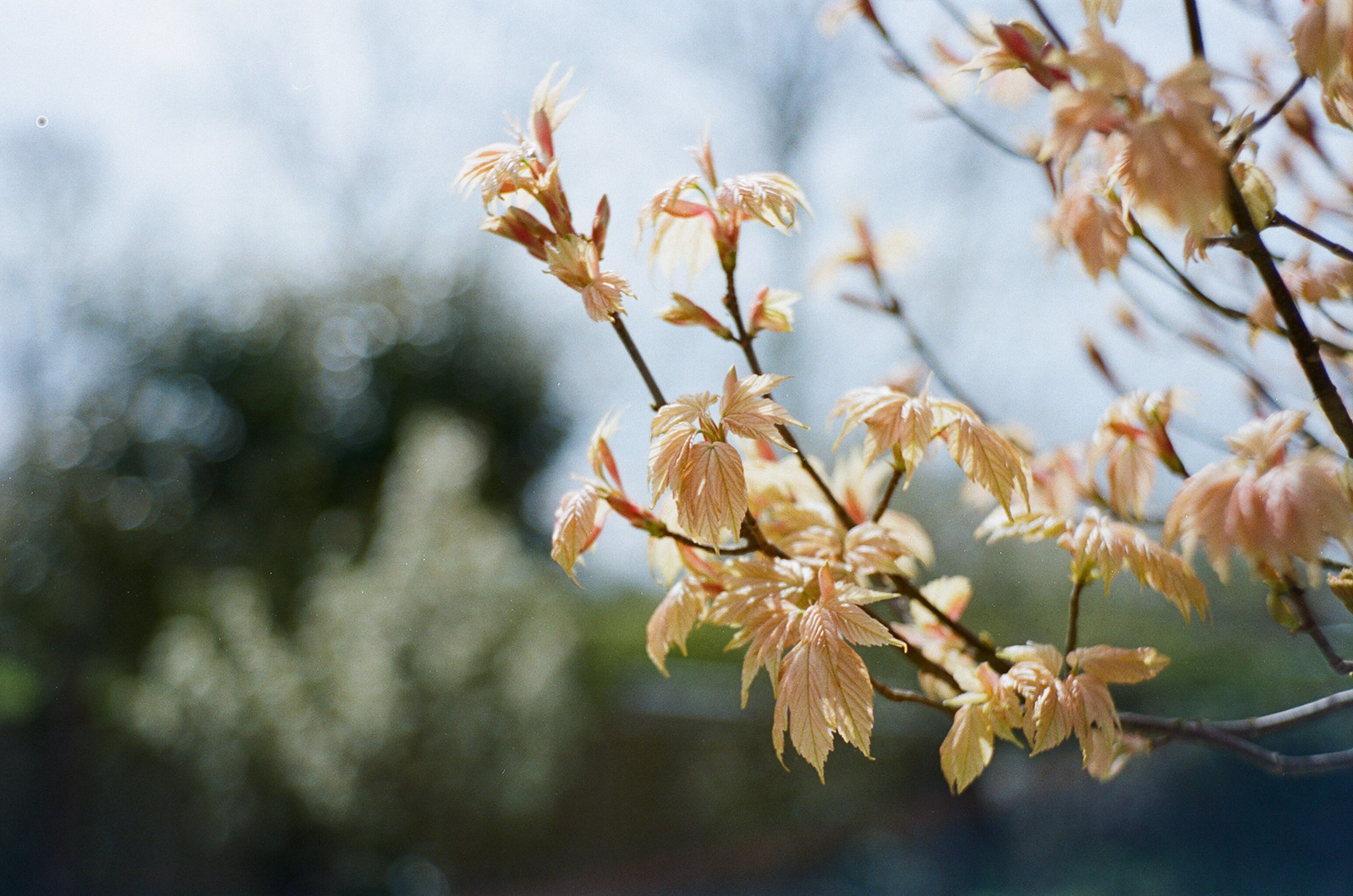


The elephant in the room
Before I conclude my thoughts on the lens I just want to talk about what I think is the elephant in the room, the Lomography brand and the £500 the price tag. For some reason, almost every time I post a picture of this lens on social media, for every five positive comments of intrigue I get, one comment crops up containing harsh and often angry criticism. These criticisms are largely about price, but occasionally come in the form of attacks at Lomography themselves.
The price
Let me just say, if I said this lens was expensive, it would make me a hypocrite. I reviewed and bought a Leica M-A about a year ago. A camera that is to all intents and purposes was the same as the M4-P it replaced. I bought the M-A for many reasons; I wanted a new Leica, I wanted the advantage of buying new (a warranty etc), but also I liked the look of it, the feel and the combination of features seemed perfect for me. This subtle combination of features and factors - to me at least - made it worth the extra cash.
If you want to buy an original Jupiter 3, then just as many people are happy buying a second hand Leica, that's fine! If you go down that road it is likely that no one will criticise your choice. What's odd is that if you take the more expensive road as I did with my M-A, there will be a few that tell you you've made the wrong choice. In my view neither choice is wrong. One path gives you a higher price, less potential problems and a warranty for 2 years if you do have problems. The other path gives you a lower price, a lens that probably won't accurately focus on a Leica when shot wide open and will potentially need a clean/service. It might also result in you needing to try a few lenses to find a "good copy".
Regardless of the details of the choice though, the choice is now there, and ultimately whether or not the Lomography lens choice is expensive is going to be down to the individual. For my money, all things considered, I don't think it's bad value at all for a new lens.
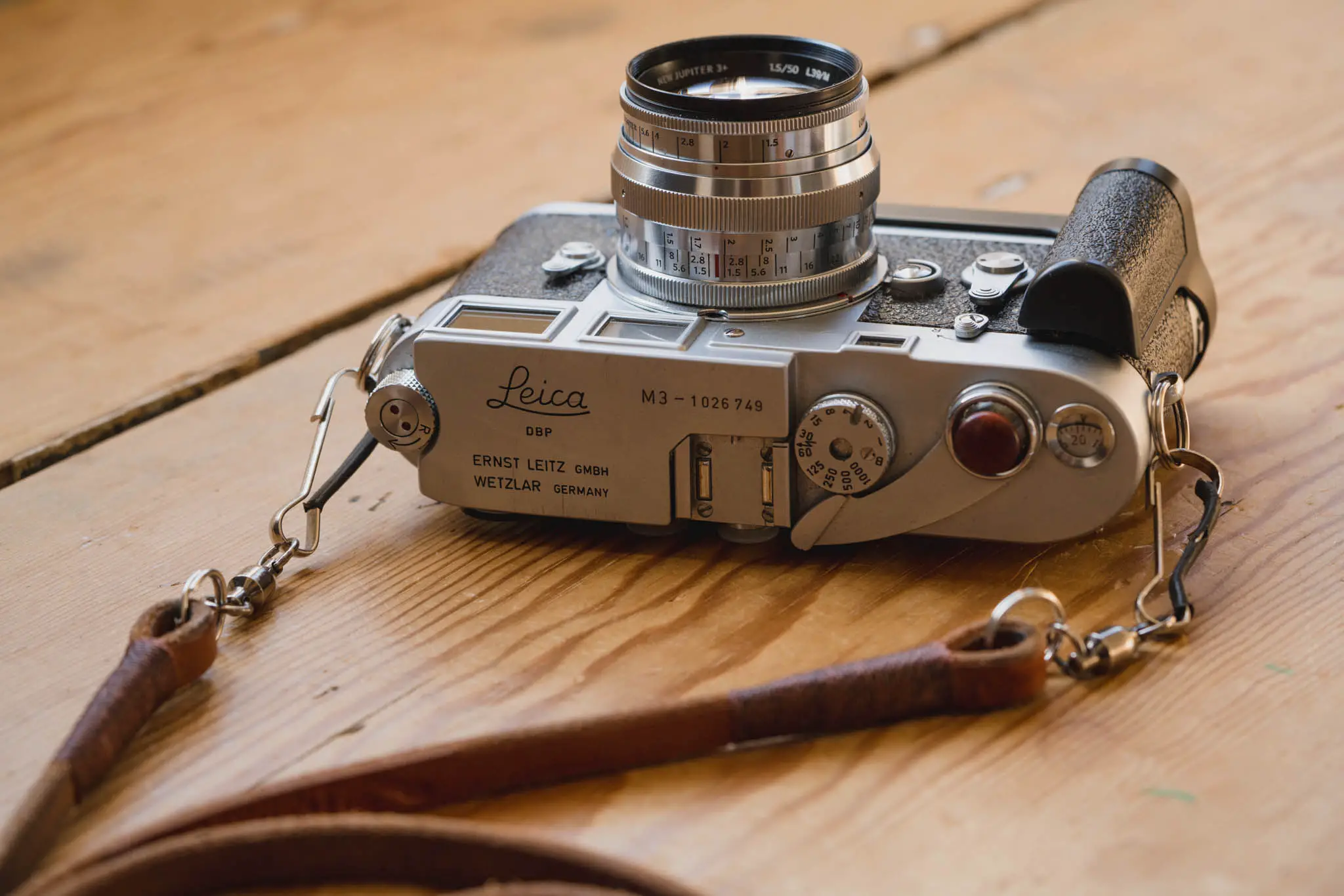
The Lomography brand
As for the Lomography brand. Well, that's a big conversation I've had with many people over the years. Am I interested in many of their other products? Well, I've got a Lomokino, and I'd quite like an L-CA wide (I'm blaming you for that one Hannah). But largely it's just the more recent Leica lenses that tickle my fancy. In reality though, none of it is well marketed to me. I'm a 30 something male who probably takes life a little more seriously than the target audience for most Lomography kit.
Call me crazy though, but my approach to all things photography is to judge what I have in my hands by the merit of the impact or otherwise it will have on my work. We are all deeply influenced by marketing and branding - I know, I own a branding company. As such I can see why "serious" photographers might be put off by a product made by Lomography. "Serious" photographers have just not traditionally been their target audience. But, I know of a good few "serious" photographers who take photos that look very much like the photos this lens produces. For me this makes the Lomography new Jupiter 3+ a serious contender for those sorts of photographers. Am I saying that I think people should give Lomography a break? No I'm not sure I am, everyone is entitled to their opinion. What I am saying is that if you are looking to achieve what this lens would help you achieve in your style of photography, give yourself a break, and give this lens a chance. Branding and marketing is just psychology and the setting of mindset, the impact a lens can have on your photos is much greater than the name is happens to have on the front of it!
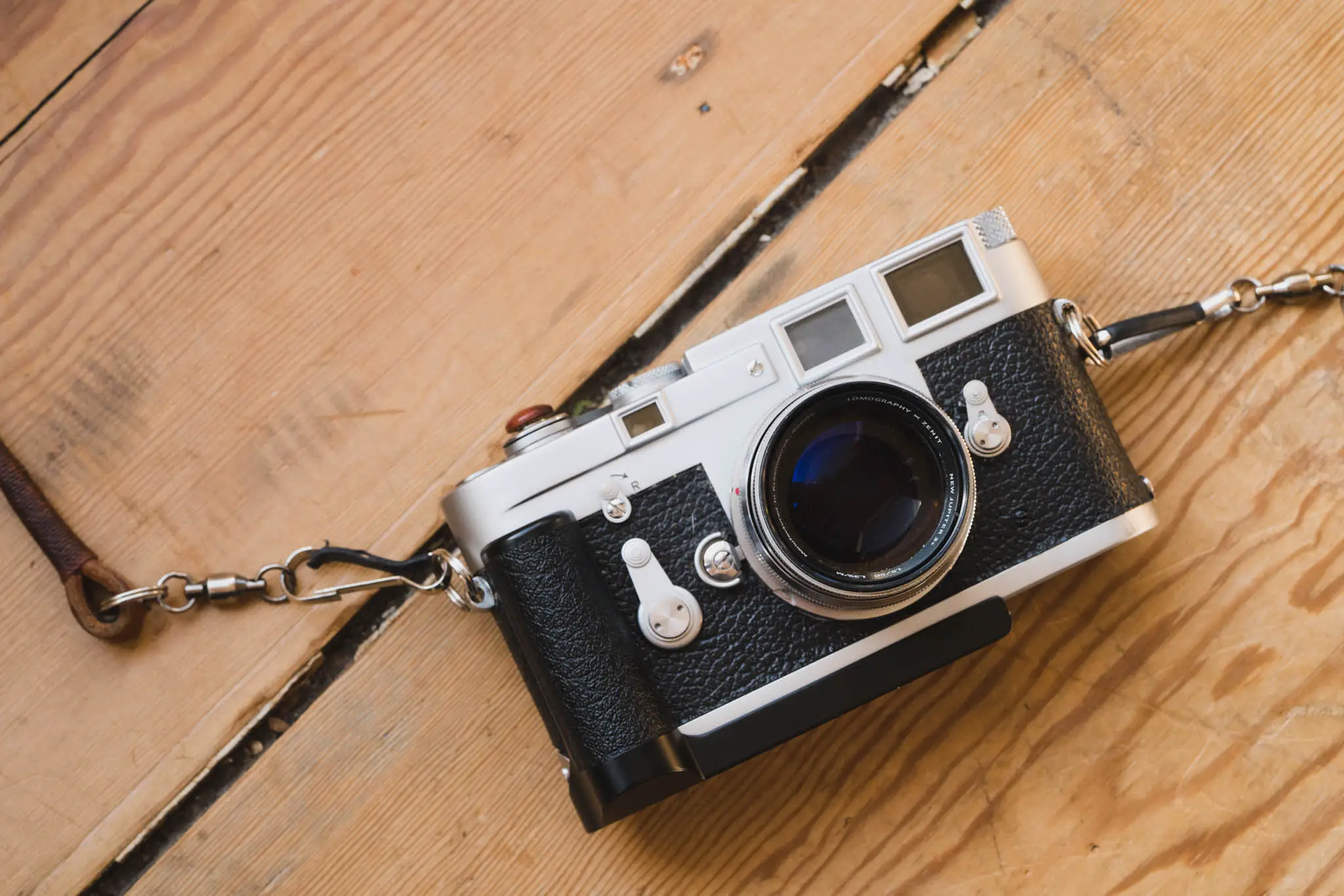
Concluding thoughts
The new Jupiter 3+ lens's propensity to flare, it's softness wide open and toward the corners, it's vignetting, distortions and focus shift all add up to a lens that for the modern photographer obsessed with objective perfection probably amounts to some sort of nightmare. Of course, to those of us who are less concerned with objective perfection, and in fact a little more intrigued by the possibilities that lenses with pronounced character traits can bring, this lens is of much more interest.


It's true that its similarity to its predecessor in terms of character might make some question its retail price. But for every person who questions that price there will be at least one other person who understands the merits of buying new. If you are on the fence and are interested in this sort of character, I would simply ask yourself if you are more interested in readily obtaining these character traits without a fuss for the sake of your photography, or are you happy in the exploration and experimentation that comes with buying older glass? As I say, neither path is wrong in my mind.
For my photography, I have settled on the look I can readily obtain with the Zeiss 50mm ZM Sonnar. This new Jupiter 3+ doesn't change that. What it has made me realise is just how objectively good I like my lenses to be. I like to have complete control of the outcome, and that includes when shooting into the sun. It surprises me in some ways that I achieve that from a lens like the Zeiss ZM Sonnar that so many people see as some sort of strong character lens. But in reality, comparatively speaking the Zeiss is just a lot more "normal" than most seem to give it credit. The Lomography New Jupiter 3+ on the other hand - at least beyond its focal length - is not a normal lens, not by modern standards anyway.
What it is, is a lens that through its obvious connection to its roots brings a strong character that must be embraced to be enjoyed. Yet at the same time as offering this strong character, it does it in a way that removes some of frustrations and pitfalls of buying used vintage lens. As such, were I looking to achieve the sort of look this lens produces as part of my every day photography, I would be very seriously considering the Lomography New Jupiter 3+ as my lens of choice.
Thanks for reading
Hamish
Interesting further reading:
Lomography website product page
Expert Advice: Brian Sweeney's First Impressions of the New Jupiter 3+
Sovietcams (the whole website is interesting)
Zeiss Sonnar review inc comments about star shaped aperture
Some thoughts on using old Soviet lenses
Share this post:
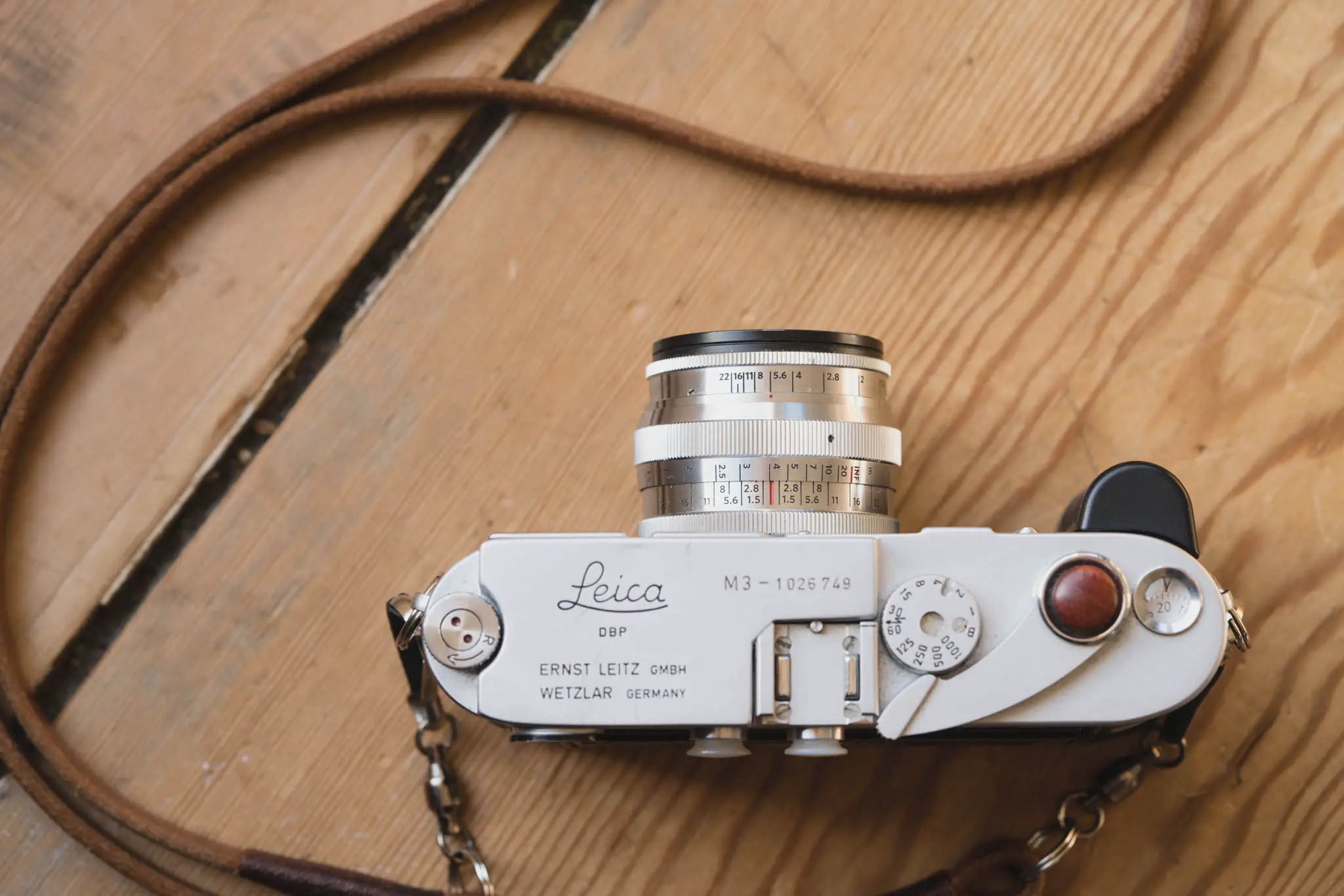



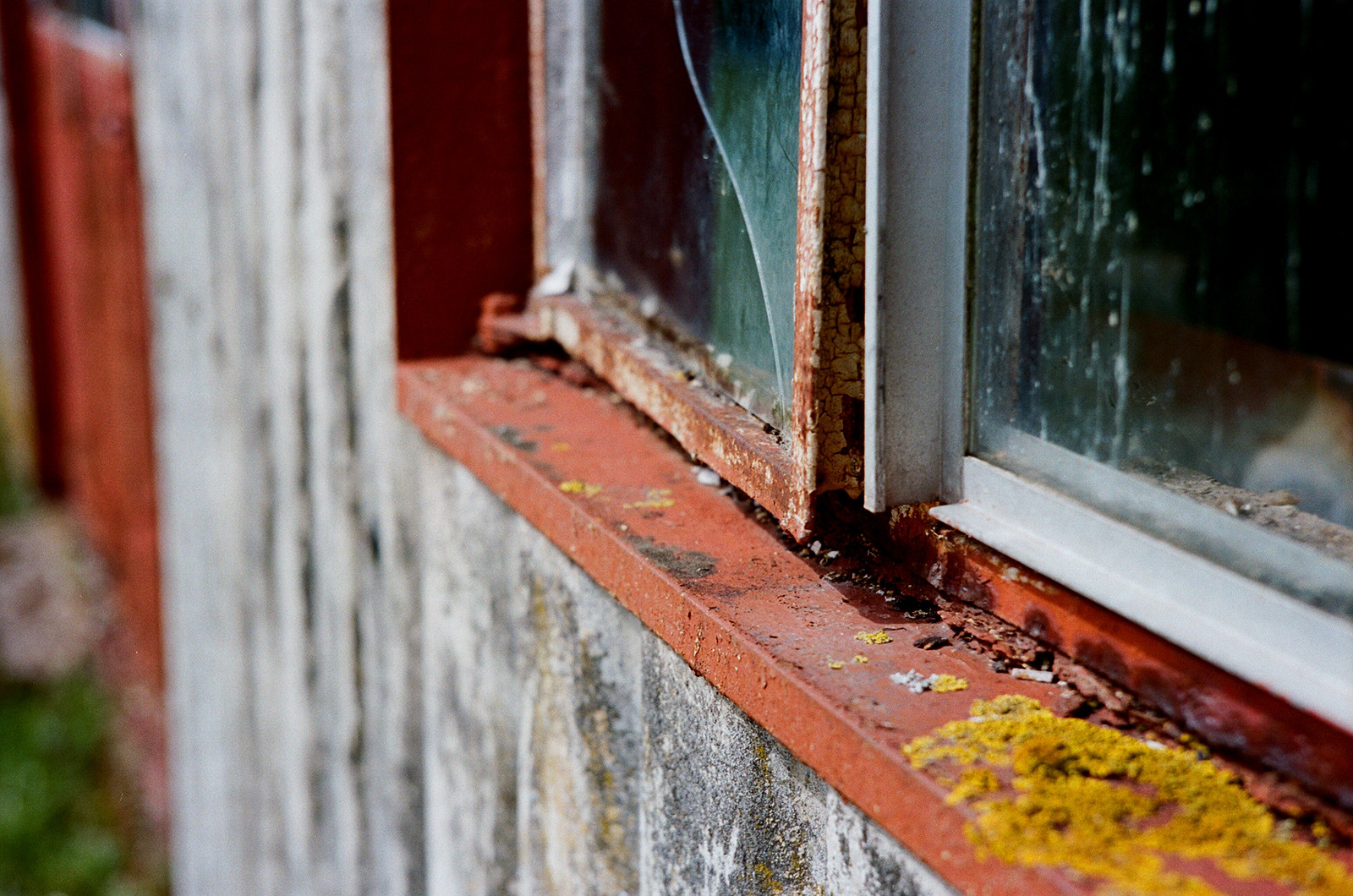

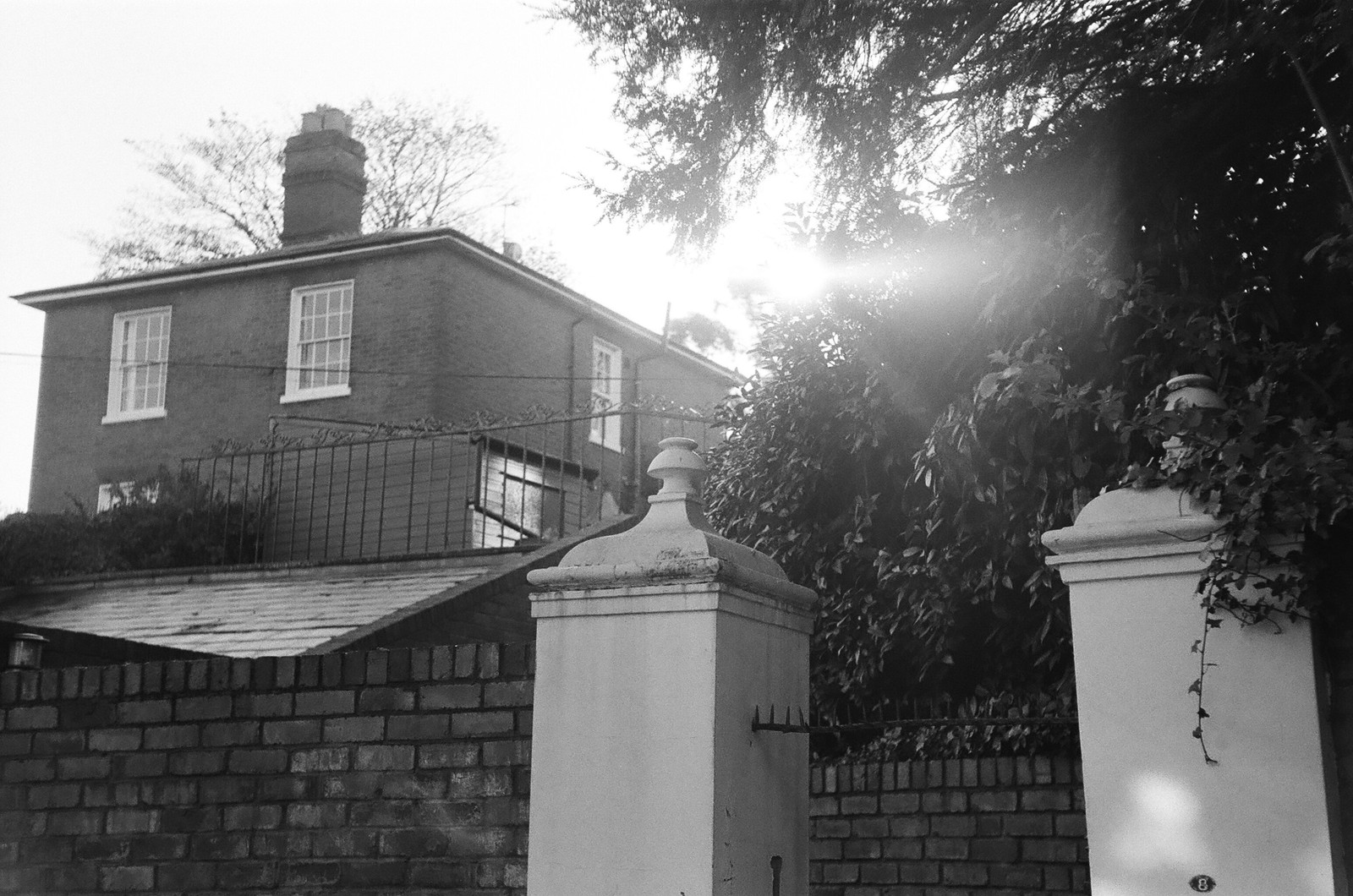







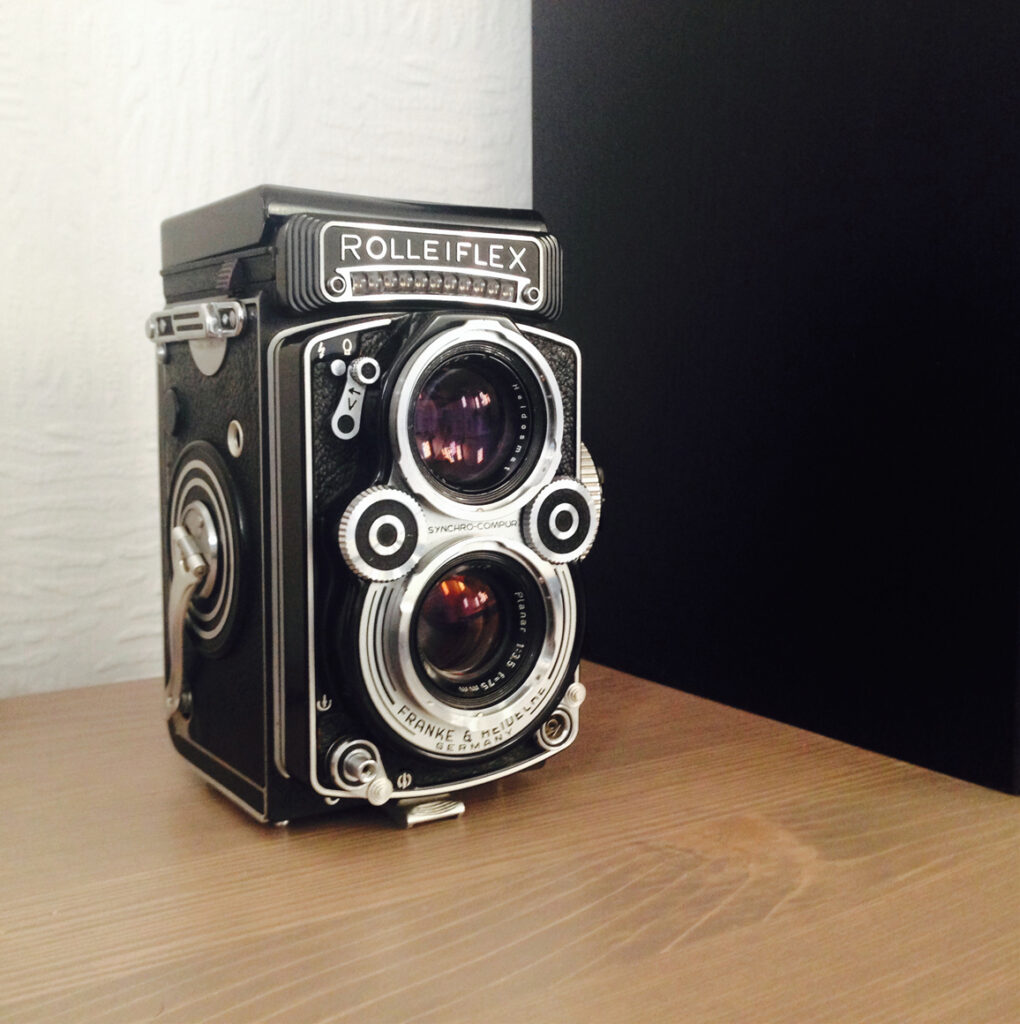
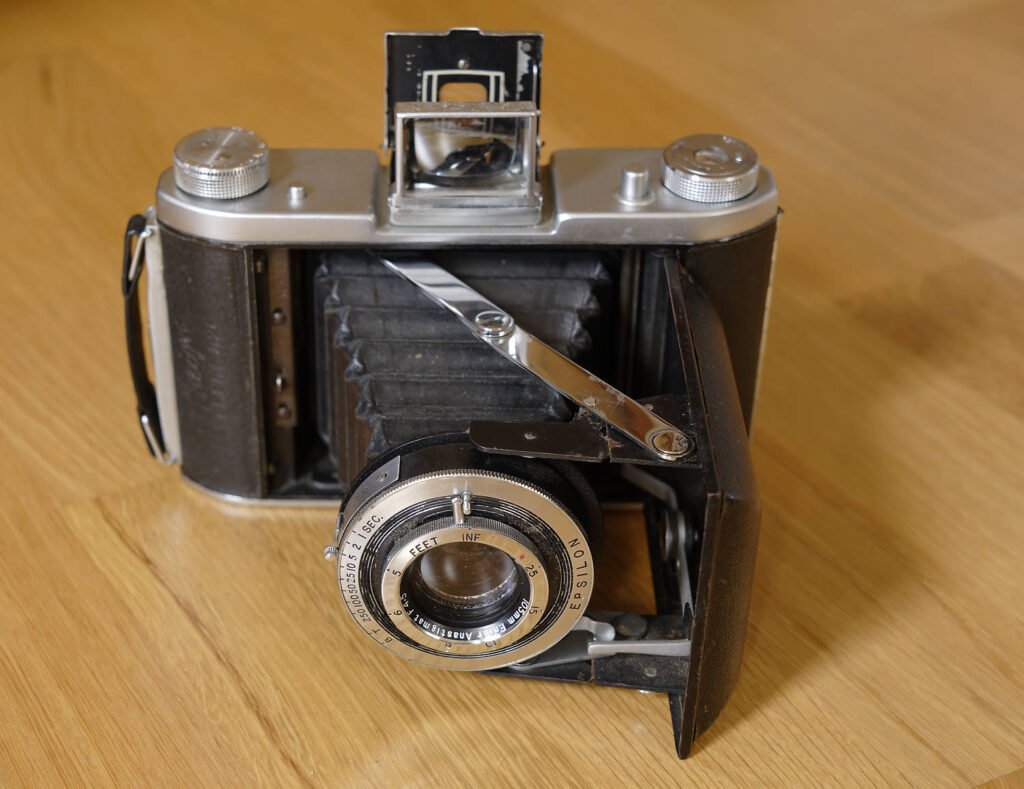




Comments
Steve on Lomography 50mm f/1.5 Zenit New Jupiter 3+ Art lens Review
Comment posted: 15/05/2016
Comment posted: 15/05/2016
Frank Lehnen on Lomography 50mm f/1.5 Zenit New Jupiter 3+ Art lens Review
Comment posted: 15/05/2016
I had a Jupiter 8 with my long gone Leica CL and loved it's imperfections. I think Lomography have succeeded in recreating these with he new lens. But considering the price tag (and forgetting to compensate for the 1.5 aperture...) I'll certainly go for an older Jupiter 8 again for my Leica IIIa.
If you buy from a reputable seller from the east (yes, there are some, but you have to be careful), you can get VERY good clean lenses for around 50€.
Comment posted: 15/05/2016
Comment posted: 15/05/2016
Comment posted: 15/05/2016
Rasmus on Lomography 50mm f/1.5 Zenit New Jupiter 3+ Art lens Review
Comment posted: 15/05/2016
Comment posted: 15/05/2016
Comment posted: 15/05/2016
Aukje on Lomography 50mm f/1.5 Zenit New Jupiter 3+ Art lens Review
Comment posted: 15/05/2016
Comment posted: 15/05/2016
Alex on Lomography 50mm f/1.5 Zenit New Jupiter 3+ Art lens Review
Comment posted: 15/05/2016
Comment posted: 15/05/2016
Blinx on Lomography 50mm f/1.5 Zenit New Jupiter 3+ Art lens Review
Comment posted: 16/05/2016
Taken on its own merits, the J3 rendering is too uncompromising for anything but portraits (the last B&W one of the baby is beautiful), and I find focus shift annoying in a lens designed to isolate one area sharply. Add the rangefinder factor, and it's hard to know exactly what is out of register as there are too many variables.
I look forward to the J8 review. Mine is an uncoated late model and ghosts like crazy if direct light gets anywhere near the front element. Definitely a sun over the shoulder lens.
Ken Hindle-May on Lomography 50mm f/1.5 Zenit New Jupiter 3+ Art lens Review
Comment posted: 17/05/2016
That said, Lomography and 'Lomographers' are certainly not above criticism, and I say that as someone who probably only got into photography because of Lomography. First off, a lot of their advice is terrible. Shoot 100 ISO film all the time (and to hell with camera shake)! Get right up close to your subject (never mind that the LC-A has an 80cm minimum focusing distance)! Cross process everything (thus creating a massive crutch for the novice photographer, as even poor photos look interesting cross processed)! I think you have to cut Lomography some slack though, whether you actually like them or not, simply for the new life they've breathed into film photography. How much harder would it be for us to shoot film today if they hadn't made it a quirky fashion statement? I suspect we'd have lost a fair few more emulsions than we have and probably another manufacturer or two.
What seems to annoy people most though, are the prices Lomography charge, and I'm kind of with them on that. Though I buy their film quite regularly and have the odd accessory, their cameras and lenses always seem rather expensive for what they are. That said, photography is full of silly prices so it seems unfair that they are singled out to such an extent. Where's the hate for Leica selling rebadged Panasonic compacts with a red dot and a 50% markup?
Regarding this and their other lenses though, I don't think the price is that bad. On the one hand, as a hobbyist I'd need a very high disposable income in order to buy one, so high that it's unlikely I ever will. I have a really nice K-mount Helios 44 which is about as sharp and just as distinctive, so why would I? On the other hand, if I were a professional with the ability to offset my gear costs against tax then I'd be looking very hard at this, the Minitar and the new Daguerrotype (but not the Petzval, which produces images that make me feel nauseous). These days being distinctive, rather than technically perfect, is the name of the game and if it were my livelihood I'd want the security of a new lens with a warranty.
Comment posted: 17/05/2016
Andrew on Lomography 50mm f/1.5 Zenit New Jupiter 3+ Art lens Review
Comment posted: 17/05/2016
I am a Sonnar fanatic and currently own five of them, including an old 1937 uncoated f/1.5 Zeiss, a 1943 coated f/2 (both converted to Leica by Brian Sweeney), a 1963 coated Jupiter 3 (a "good copy" optimized by Brian Sweeney), a late 1970s export model f/2 Jupiter 8 also optimized by Mr. Sweeney including 0.7 meter close focus and finally the new Jupiter 3 . I previously owned the Zeiss ZM, but sold it on as I prefer the stronger Sonnar character of the old lenses and have a Leica 50 Summilux for when I don't want that character.
Simply, the Jupiter 3 is the best Sonnar I've ever used. All of the character of the 1937, but with far better build quality and modern coatings. This is rapidly becoming my favorite lens.
Comment posted: 17/05/2016
Comment posted: 17/05/2016
jeremy north on Lomography 50mm f/1.5 Zenit New Jupiter 3+ Art lens Review
Comment posted: 19/05/2016
Apart from its heritage,I don't understand why the comparison is with the ZM Sonnar.. In my opinion, one would have to be crazy to drop £500 for this lens to put it on a Leica M camera. That is almost Zeiss money for an inferior product which needs an adaptor. (Actually £500 is twice what I thought the lens would cost even at Lomo's inflated prices)
As the Jupiter is a screw mount lens, should it not be compared with other LTM lenses, Voigtlander for example? Surely its USP is that it is a new fast lens for old screw mount Leicas.
While it may have been out of convenience that you tested it on Leica M cameras, I'd prefer to know how well it works on a Barnack Leica, its intended use?
Comment posted: 19/05/2016
Brian Sweeney on Lomography 50mm f/1.5 Zenit New Jupiter 3+ Art lens Review
Comment posted: 24/06/2016
I have most of the Sonnar type 50mm (5cm) lenses made since 1934. The Jupiter-3 compares favorably with most of the classic 5cm F1.5 and (Nikkor) F1.4 lenses made. The build quality compares with the Canon 50/1.5 and Nikkor 5cm F1.4. Prices for a clean Canon or Nikkor run as much as the J-3 . (With Canon - beware of etched glass from lubricants) A clean KMZ 5cm F1.5 will run ~$300 or so, and typically need to be adjusted for the Leica. The J-3 was perfect out of the box on my M9. I've seen people re-sell my adjusted J-3's for $350, and one guy resold one of my CZJ 5cm F1.5 conversions for over $650. Buy a J-3 instead.
I have Two Jupiter-3 lenses. I will convert one of them to Nikon S-Mount. It's reversible- just a matter of shimming the module into a mount. I have several mounts left over from the Sonnar conversions.
Comment posted: 24/06/2016
Wilson Laidlaw on Lomography 50mm f/1.5 Zenit New Jupiter 3+ Art lens Review
Comment posted: 18/09/2016
Thank you for that excellent and detailed review. I am looking for a lens to go with my recently acquired Reid & Sigrist LTM camera. I want a fast lens and I am currently using a Canon 5cm f1,8 which is OK but has a lot of spherical aberration in the corners at larger apertures, compared with the f1.5 Opton Sonnar I have on my Contax IIA. I was thinking of either another Opton Sonnar on one of the new converter adapters, which focus the "correct" way unlike the older Contax RF to Leica adapters.
However your review has now made me consider a new Jupiter 3 instead. I will go to the Lomography shop in London and give the lens a try on my modern digital Leica M240, as I can then transfer the photos to a 12.9 iPad and get instant results to assess the lens. The aperture shift somewhat concerns me, given that I will be using it on a film rangefinder camera, mostly for landscape and architecture shots on B&W film, where it is difficult to work out how far behind the object you should focus to compensate for the shift.
Comment posted: 18/09/2016
Tadeas on Lomography 50mm f/1.5 Zenit New Jupiter 3+ Art lens Review
Comment posted: 17/10/2016
But having a good relation with my local Lomography embassy I will be having Jupiter 3 for a test whenever I will ask. But Im waiting for suitable subject matter. But I must say, I love your review of this lens, its pretty complex and I think you got to the point of the lens. I can see myself in "buying new" attitude.
Toby Madrigal on Lomography 50mm f/1.5 Zenit New Jupiter 3+ Art lens Review
Comment posted: 04/10/2017
Comment posted: 04/10/2017
Wilson Laidlaw on Lomography 50mm f/1.5 Zenit New Jupiter 3+ Art lens Review
Comment posted: 07/10/2017
Benson on Lomography 50mm f/1.5 Zenit New Jupiter 3+ Art lens Review
Comment posted: 15/03/2018
Comment posted: 15/03/2018
Eric James on Lomography 50mm f/1.5 Zenit New Jupiter 3+ Art lens Review
Comment posted: 12/06/2018
https://www.flickr.com/photos/jamese007uk
Comment posted: 12/06/2018
Skyllaney restored Jupiter-3 Review - Exploring the Classic Sonnars pt.11 - 35mmc on Lomography 50mm f/1.5 Zenit New Jupiter 3+ Art lens Review
Comment posted: 15/06/2020